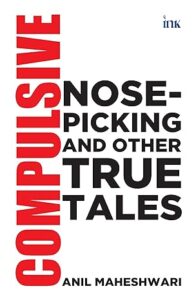How hacks malign Swamy II
Ravi Shanker Kapoor | May 19, 2016 1:27 pm

The mainstream media and public intellectuals have suddenly realized many virtues in Reserve Bank of India Governor Raghuram Rajan. For years, he and his predecessors were slammed by a large section of opinion makers, editorialists, India Inc, etc., for dogmatically keeping interest rates up and getting obsessed with inflation. But now that Bharatiya Janata Party leader Subramanian Swamy has castigated him in no uncertain terms, all of them have woken up to the brilliance and perspicacity of the banking regulator.
Perhaps he is brilliant, but this has not helped check the exponential rise in bad loans during his tenure. In fact, commentators have noticed slackness in the regulatory remit of the central bank in this regard.
Rajan’s record in promoting Islamic banking (interest-free banking, a jihadist measure), is even more deplorable. In 2005, the RBI had constituted a committee under him to study the feasibility of introducing Islamic banking in the country. The committee said, “Another area that falls broadly in the ambit of financial infrastructure for inclusion is the provision of interest-free banking. Certain faiths prohibit the use of financial instruments that pay interest. The non-availability of interest-free banking products results in some Indians not being able to access banking products and services due to reasons of faith.”
Notice the disingenuousness—“certain faiths.” It is only Islam, or rather its most regressive versions, that is opposed to the concept of interest payment. Earlier, Christianity too was against to interest, but the faith has evolved; Islam hasn’t. Liberals like Rajan want to ensure that it doesn’t. They want to create an environment conducive for Islamic banking. State Bank of India even wanted to start a Shariat-compliant financial instrument.
It was because of the vigilantism of Swamy that Islamic banking made no progress in our country. Besides, he is a trained and eminent economist who has collaborated with legends like Paul Samuelson. Therefore, his remarks on Rajan cannot and should not be dismissed as the rants of a frustrated politician—which, by the way, is the constant refrain of the mainstream media.
We are told that terming Rajan as “mentally not fully Indian” is jingoistic, aimed at pleasing the Hindutva constituency, etc. This, however, is not the thrust of Swamy’s argument. In his letter to Prime Minister Narendra Modi, he wrote that he was “shocked at the willful and apparently deliberate attempt by Dr. Rajan to wreck the Indian economy.” Further, according to Swamy, “when the Wholesale Price Index (WPI) started to decline due to induced recession in the small and medium industry, he shifted the target from WPI to Consumer Price Index (CPI) which has not, however, declined because of retail prices. On the contrary, it has risen. Had Dr. Raghuram Rajan stuck to WPI, interest rates would have been much lower today, and given huge relief to small and medium industries. Instead, they are squeezed further and consequent increasing further unemployment.”
Swamy is not the first to have made this argument. In October 2014, Surjit Bhalla gave 10 reasons for the lowering of interest rates. Many other experts have also favored an easy money regime. The entire industry has been crying for rate cuts. And yet, at the peak of the Swamy vs. Rajan battle, when push came to shove, we were informed by The Economic Times (May 19) that nine out of 10 businessmen wanted Rajan to continue as RBI Governor!
A day before ET came up with its “survey,” it published an editorial in which it called Swamy’s suggestions to the Prime Minister as “load of rubbish.” The sister publication, The Times Of India, urged the government to “give RBI governor another term, ignore Subramanian Swamy’s pseudo-patriotism.”
Animus and agenda seem to be the guiding forces of the mainstream media.






























